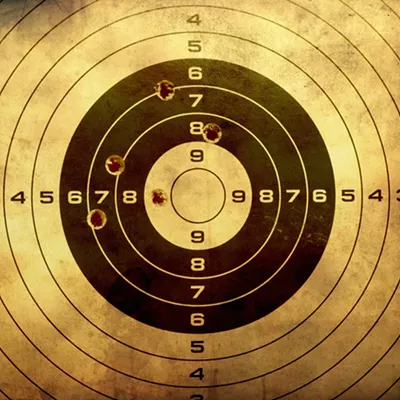"It's commonly known as Tower Mountain," say Bob Wyatt, director of engineering for KSPS. The prominent hill south of Spokane bristles with towers and antennas for local TV and radio stations. The accident also knocked out KXLY's channel 11 programming, MyNetwork. Their antenna was on the KSPS tower, too.
Wyatt says he is still unsure why the tower failed. Just a guess, but perhaps grumpy viewers, upset at the fall pledge drive interrupting their British comedies with the threat of Daniel O'Donnell singing Songs of Faith for yet another hour, took matters into their own hands. But damage from November's high winds or guy wire failure could be to blame. "We are not sure of the cause other than one of the guy anchors let loose," Wyatt says.
The inspection into the cause of the collapse continues. The tower was erected in 1967. Chief engineers with stations around town say towers are inspected rigorously and any sections showing signs of metal fatigue are routinely replaced. The KSPS tower has undergone especially intense scrutiny since upgrades were added in 2003, says Kerry Faggiano, manager of corporate marketing and outreach for KSPS.
The tower failure affected only those Luddites among us who receive the station through the antenna atop our TV, known as "off-air" reception. Cable and satellite dish customers were able to hear all the Daniel O'Donnell they could stand during the past week.
"An amazing number of people get us off-air. Our first estimates were 25,000 households. Now we are thinking it's 30,000 or even 35,000 based on the sheer number of calls," says Faggiano.
The station has been deluged with calls, she and other staffers say, with many viewers offering additional monetary support to help fix the tower. This is heartwarming, Faggiano says, but the initial repair estimate is $1.3 million.
The accident opens a fascinating window into the arcane world of transmission towers. Wyatt, the KSPS engineer, says it's a major miracle the station is back on the air within a week. Repairing such a catastrophe can normally take up to four months, he says.
"This is such a specialized industry you can't just go out and purchase parts at any cost," says Tim Anderson, director of engineering for Morgan Murphy Stations West, which owns KXLY. "We have to lots of times cobble things together, use common technologies and go to the bone yard to find usable items."
"This is networking at its greatest," Wyatt adds. "It's a matter of knowing the right people."
Using his contacts -- as well as offers of aid from other broadcasters -- Wyatt was able to locate a "batwing antenna" that had been sitting in storage in Seattle for at least four years, he says. Metallurgists, tower engineers and tower erection crews "may have bent or shoved off other jobs" to get here now instead of several weeks from now, Wyatt says.















